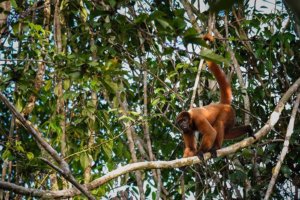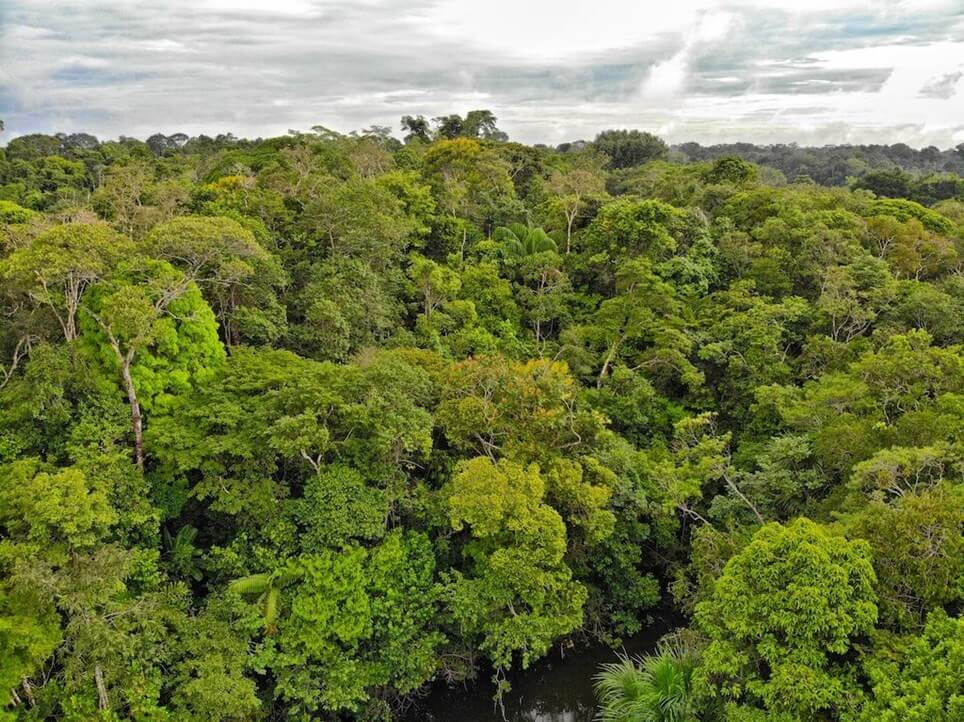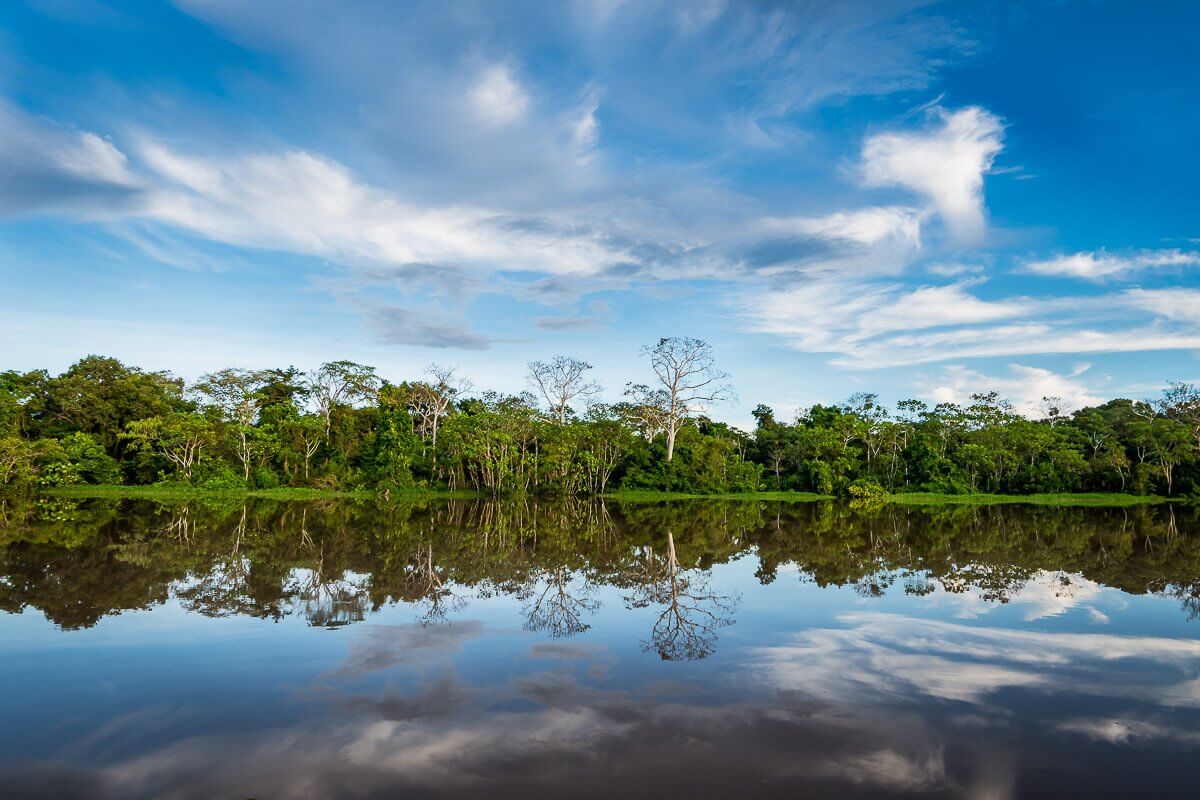Yanacacu & Pucate Rivers
 The beginning of a new adventure starts from Nauta, heading to the Yanacacu and Pucate Rivers. Not the usual Lindblad ship, Delfin II brings certain differences into the mix, creating an aura of mystery and curiosity into the equation of our expedition. Soon enough, all the questions are answered, and the curiosity turns into fascination towards the Pacaya Samiria Natural Reserve. On arrival to the Upper Amazon expeditions, most guests have high expectations for nature and wildlife photography. The opportunities are there. But a sense of respect is quickly born, as on every skiff ride, we do need to focus searching for fauna. This departure will help everyone improve their photography skills, are they will be reviewed as situations and weather change constantly.
The beginning of a new adventure starts from Nauta, heading to the Yanacacu and Pucate Rivers. Not the usual Lindblad ship, Delfin II brings certain differences into the mix, creating an aura of mystery and curiosity into the equation of our expedition. Soon enough, all the questions are answered, and the curiosity turns into fascination towards the Pacaya Samiria Natural Reserve. On arrival to the Upper Amazon expeditions, most guests have high expectations for nature and wildlife photography. The opportunities are there. But a sense of respect is quickly born, as on every skiff ride, we do need to focus searching for fauna. This departure will help everyone improve their photography skills, are they will be reviewed as situations and weather change constantly.
Amazon Natural Park and Nauta Caño
 A long hike through the rainforest at the Amazon Natural Park, a private park along the Marañon River, brought us this morning to a series of suspension bridges. We were able to walk along the mid-canopy level to observe the plant and animal life from a different perspective than ground level. During an afternoon skiff ride, we visited Nauta Caño, or Nauta Creek, where we looked for sloths, monkeys, and birds, and admired the beautiful reflections in the calm waters of a blackwater creek.
A long hike through the rainforest at the Amazon Natural Park, a private park along the Marañon River, brought us this morning to a series of suspension bridges. We were able to walk along the mid-canopy level to observe the plant and animal life from a different perspective than ground level. During an afternoon skiff ride, we visited Nauta Caño, or Nauta Creek, where we looked for sloths, monkeys, and birds, and admired the beautiful reflections in the calm waters of a blackwater creek.
San Francisco Community & Clavero Lake
Today we had a wonderful day of exploration. We experienced firsthand the cultural and natural diversity of the Peruvian Upper Amazon.
 Early in the morning, we had a pre-breakfast skiff ride along the Marayali River. The latter is a fairly big stream that connects the Marañon with the Ucayali River. We observed many bird species in the prime time of the day. Later, after breakfast, we went to visit San Francisco Community. We were welcomed by the villagers, especially by a group of women leaders that are part of the several projects of Minga Peru. Minga Peru is the NGO that the Lindblad – National Geographic Fund supports. We had a very hot but enlightened morning learning about the local way of living and the several productive and cultural activities that people carry on in this community.
Early in the morning, we had a pre-breakfast skiff ride along the Marayali River. The latter is a fairly big stream that connects the Marañon with the Ucayali River. We observed many bird species in the prime time of the day. Later, after breakfast, we went to visit San Francisco Community. We were welcomed by the villagers, especially by a group of women leaders that are part of the several projects of Minga Peru. Minga Peru is the NGO that the Lindblad – National Geographic Fund supports. We had a very hot but enlightened morning learning about the local way of living and the several productive and cultural activities that people carry on in this community.
We had a great opportunity to interact and share precious moments with people of all ages, ranging from small kids in a school class to elders and leaders. We even had time to visit the house of Doris, a local townswoman and animal lover. Doris spends her time maintaining, feeding and most importantly loving several rainforest animals that live with her.
In the afternoon, we visited Clavero Lake. We had the chance to go swimming in this remote location in the clean waters of this beautiful lake. Finally, in the late afternoon, we explored the area with our skiffs and enjoyed watching many birds and several mammals. After dinner, lively music played by some talented members of the ship’s crew was a golden finale of this long but productive day in the Upper Amazon of Peru.
Ucayali River, Belluda Caño & El Dorado
 This day brings our Amazon expedition into the most remote geographical point of our adventure in Peru. Every caño has its own particular beauty, but also, seems to have more presence of certain species. The rivers wind permanently, always decorated with lush vegetation on each side. Our guests became active spotters of wildlife, closely working together with our local guides.
This day brings our Amazon expedition into the most remote geographical point of our adventure in Peru. Every caño has its own particular beauty, but also, seems to have more presence of certain species. The rivers wind permanently, always decorated with lush vegetation on each side. Our guests became active spotters of wildlife, closely working together with our local guides.
On the second skiff outing of the day, guests are surprised with a later return. The idea, allowing them to experience the forest after sunset when darkness takes over. Engulfed within the sounds of nature, our local guides point powerful spotlights into the water surface in search for caymans. As we return to the boat, big smiles and happy comments are heard in the dark of the night.
Zapote and Pacaya Rivers
 Today we explored the most remote areas of the week’s voyage by skiff. A morning ride through the Zapote River brought us up close and personal with the endemic monk saki monkey. The flooded lagoons off the Pacaya River, with their towering isolated trees, were a departure from the densely vegetated forest we’ve grown accustomed to this week and were the backdrop for some great bird-watching.
Today we explored the most remote areas of the week’s voyage by skiff. A morning ride through the Zapote River brought us up close and personal with the endemic monk saki monkey. The flooded lagoons off the Pacaya River, with their towering isolated trees, were a departure from the densely vegetated forest we’ve grown accustomed to this week and were the backdrop for some great bird-watching.
Supay Caño & Puerto Miguel/Yarapa Caño
 A brand-new day of our expedition started with a beautiful overcast morning. The latter contributed a lot to a comfortable exploration of the Supay Caño, a small tributary of the Ucayali River and our first visitor’s site of the day. Right after breakfast, we boarded our fleet of skiffs to explore the area. We found numerous bird species and other creatures, including yellow-billed terns, black-collared hawks, colorful tanagers and cotingas, hoatzins, green iguanas, etc. All of this wildlife was surrounded by an exuberant green forest.
A brand-new day of our expedition started with a beautiful overcast morning. The latter contributed a lot to a comfortable exploration of the Supay Caño, a small tributary of the Ucayali River and our first visitor’s site of the day. Right after breakfast, we boarded our fleet of skiffs to explore the area. We found numerous bird species and other creatures, including yellow-billed terns, black-collared hawks, colorful tanagers and cotingas, hoatzins, green iguanas, etc. All of this wildlife was surrounded by an exuberant green forest.
In the afternoon, we had the opportunity to go ashore and visit the picturesque village of Puerto Miguel. This community is friendly, clean and well organized. We walked briefly throughout the town admiring the well-kept gardens that surround the houses. We visited one of the largest handcrafts market of the reserve which is operated by local women. After this lovely visit, we had a final skiff ride in Yarapa Caño. In this location, we had a golden finale to our expedition, for we had extraordinary sightings that included wooly monkeys, macaws, flycatchers, etc.
Late in the afternoon, we came back onboard with our minds and spirits enriched with all the new adventures and feelings that the Upper Amazon has brought to our lives during this expedition. This week in Peru’s Upper Amazon was filled with all of the ingredients that have made this expedition a successful one with great animal sightings, intercultural experiences, wonderful photography opportunities, the company of a hard-working crew, congenial travel mates and excellent meals with regional flavors.









 The beginning of a new adventure starts from Nauta, heading to the Yanacacu and Pucate Rivers. Not the usual Lindblad ship, Delfin II brings certain differences into the mix, creating an aura of mystery and curiosity into the equation of our expedition. Soon enough, all the questions are answered, and the curiosity turns into fascination towards the Pacaya Samiria Natural Reserve. On arrival to the Upper Amazon expeditions, most guests have high expectations for nature and wildlife photography. The opportunities are there. But a sense of respect is quickly born, as on every skiff ride, we do need to focus searching for fauna. This departure will help everyone improve their photography skills, are they will be reviewed as situations and weather change constantly.
The beginning of a new adventure starts from Nauta, heading to the Yanacacu and Pucate Rivers. Not the usual Lindblad ship, Delfin II brings certain differences into the mix, creating an aura of mystery and curiosity into the equation of our expedition. Soon enough, all the questions are answered, and the curiosity turns into fascination towards the Pacaya Samiria Natural Reserve. On arrival to the Upper Amazon expeditions, most guests have high expectations for nature and wildlife photography. The opportunities are there. But a sense of respect is quickly born, as on every skiff ride, we do need to focus searching for fauna. This departure will help everyone improve their photography skills, are they will be reviewed as situations and weather change constantly. Early in the morning, we had a pre-breakfast skiff ride along the Marayali River. The latter is a fairly big stream that connects the Marañon with the Ucayali River. We observed many bird species in the prime time of the day. Later, after breakfast, we went to visit San Francisco Community. We were welcomed by the villagers, especially by a group of women leaders that are part of the several projects of Minga Peru. Minga Peru is the NGO that the Lindblad – National Geographic Fund supports. We had a very hot but enlightened morning learning about the local way of living and the several productive and cultural activities that people carry on in this community.
Early in the morning, we had a pre-breakfast skiff ride along the Marayali River. The latter is a fairly big stream that connects the Marañon with the Ucayali River. We observed many bird species in the prime time of the day. Later, after breakfast, we went to visit San Francisco Community. We were welcomed by the villagers, especially by a group of women leaders that are part of the several projects of Minga Peru. Minga Peru is the NGO that the Lindblad – National Geographic Fund supports. We had a very hot but enlightened morning learning about the local way of living and the several productive and cultural activities that people carry on in this community. This day brings our Amazon expedition into the most remote geographical point of our adventure in Peru. Every caño has its own particular beauty, but also, seems to have more presence of certain species. The rivers wind permanently, always decorated with lush vegetation on each side. Our guests became active spotters of wildlife, closely working together with our local guides.
This day brings our Amazon expedition into the most remote geographical point of our adventure in Peru. Every caño has its own particular beauty, but also, seems to have more presence of certain species. The rivers wind permanently, always decorated with lush vegetation on each side. Our guests became active spotters of wildlife, closely working together with our local guides. Today we explored the most remote areas of the week’s voyage by skiff. A morning ride through the Zapote River brought us up close and personal with the endemic monk saki monkey. The flooded lagoons off the Pacaya River, with their towering isolated trees, were a departure from the densely vegetated forest we’ve grown accustomed to this week and were the backdrop for some great bird-watching.
Today we explored the most remote areas of the week’s voyage by skiff. A morning ride through the Zapote River brought us up close and personal with the endemic monk saki monkey. The flooded lagoons off the Pacaya River, with their towering isolated trees, were a departure from the densely vegetated forest we’ve grown accustomed to this week and were the backdrop for some great bird-watching. A brand-new day of our expedition started with a beautiful overcast morning. The latter contributed a lot to a comfortable exploration of the Supay Caño, a small tributary of the Ucayali River and our first visitor’s site of the day. Right after breakfast, we boarded our fleet of skiffs to explore the area. We found numerous bird species and other creatures, including yellow-billed terns, black-collared hawks, colorful tanagers and cotingas, hoatzins, green iguanas, etc. All of this wildlife was surrounded by an exuberant green forest.
A brand-new day of our expedition started with a beautiful overcast morning. The latter contributed a lot to a comfortable exploration of the Supay Caño, a small tributary of the Ucayali River and our first visitor’s site of the day. Right after breakfast, we boarded our fleet of skiffs to explore the area. We found numerous bird species and other creatures, including yellow-billed terns, black-collared hawks, colorful tanagers and cotingas, hoatzins, green iguanas, etc. All of this wildlife was surrounded by an exuberant green forest.